How InnerSpace's creators made their disorienting flying game playable
In an inverted world with alien physics, teaching people to fly isn't easy.
InnerSpace was successfully funded on Kickstarter all the way back in 2014, and it’s come a long way since then. It's an exploration game where you zip about topsy-turvy worlds discovering relics of an ancient civilization, and the trailer shows a delicate, bird-like craft traveling past coral superstructures, stone ruins, and alien architecture. That ship, called the Cartographer, is also shown opening portals and crashing through glass, and becoming a submarine when it hits water. It's all a bit perplexing, but looks lovely nonetheless.
InnerSpace is the first commercial release from indie studio PolyKnight Games. We spoke with artist Steve Zapata, designer Eric Grossman, and director Tyler Tomaseski about how they helped players learn to fly, and what their plans after release are.
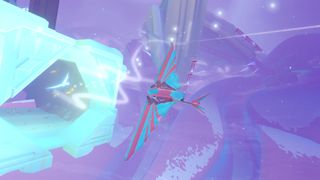
PC Gamer: How did PolyKnight Games come about and how did that lead into development of InnerSpace?
Tyler Tomaseski: We started out at college, at University of Texas, Dallas. We originally started working together on a lot of small projects. Steve and I did a few game jams together, and some longer term projects too. We did three separate four-month-long projects where we "shipped" a really small game, just for free. After that, we decided—because we were working so well together—to start a company developing indie games.
Something I realized very quickly is that because the space is so disorienting, we needed to give the player as many tools as we could
Tyler Tomaseski
Steve and I rallied up some good friends we worked with previously, like Eric Grossman, Eric Brodie, and Chris Miller. We were the core five making up the studio. We were about as small as you can get for a 3D team. Then we started working on InnerSpace.
It was the game we’d been talking about for a while. We were really interested in space and this concept of inverted worlds. We started with that, then worked our way toward a flying game. Just for the sake of wanting to explore that space, we kind of figured out everything else along the way. We were trying to figure out what sounded most fun inside of that space.
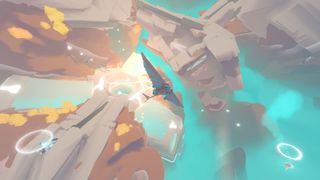
We worked our way towards Kickstarter, and had a successful campaign. We worked on our own for a year or two, and then we partnered up with Aspyr after we met them at PAX South. Thanks to Aspyr, we were able to increase our team size from five to seven. We’ve ported the game to all the consoles since then too. Originally, we were only working on Windows and Mac, but we’ve added support for Xbox, Playstation, and Switch since then.
The biggest gaming news, reviews and hardware deals
Keep up to date with the most important stories and the best deals, as picked by the PC Gamer team.
It literally started in our bedrooms. We had a little studio setup in my bedroom where Steve and I both worked on it. Steve would wake me up and I’d just work on it in my pajamas. But yeah, that’s how it started.
So the flying came later—how did you develop those mechanics specifically?
TT: The first attempt I did at it was a very floaty, realistic, more simulation-style flying game. There, it’s a lot more gradual movement over time. You have soft inputs to try and steer it. Something I realized very quickly is that because the space is so disorienting, we needed to give the player as many tools as we could to have the game respond to them in a very arcadey kind of way. That way, they can orient themselves how they want.
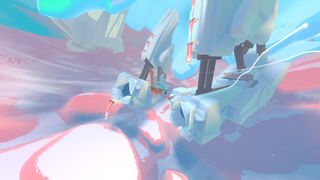
For that, we introduced the drift/stall mechanic where you can change direction without moving your plane that way. It’s why we landed on a plane that is very responsive and does exactly what you want it to do. It’s also why we made the plane very durable. We decided we wanted to make a flying game where you can run into stuff. I couldn’t think of a flying game that let you do that. I think it was more of an iterative process where we started with the extreme opposite of what we have now. The arcadey style control lent itself well to getting used to the space.
During InnerSpace’s opening hours, there’s a distinct learning curve as the player progresses from world to world and figures out what’s going on. When did you feel comfortable finalizing that early game progression?
You have to get players used to the idea that they don’t need to look for "up". The idea of "up" doesn’t really matter in our game.
Steve Zapata
Steve Zapata: A lot of it comes down to how we actually built the game. We started by building the main, primary chamber. The game is set up so that all of the secondary worlds you visit all branch from that main chamber. The first time we built it, it was way too large and disorientating. We scrapped it and built a smaller version, which was also too large. In the process of doing this we’re getting player feedback and we’re building these smaller worlds.
We had a large scale central piece that we learnt to scale down to make more accessible. We also had the smaller worlds which were a bit more focused because that’s where you encounter the boss creatures. They’re designed around a specific encounter. Every time we built one of those smaller worlds, we took information from that process and brought it back to how we approach the central world.
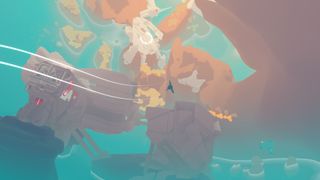
What ended up happening is that the very last worlds that we ended up building were pretty much the tutorial world that you start in. The last boss we built became the first boss you encounter. We kind of worked backward in that sense. In doing so, we were able to apply all of the information that we had gathered by watching people play into the tutorial sequence that introduces them to the game itself.
What that accomplishes is easing players into this very disorienting space. On face value, it’s extremely disorienting. You have to get players used to the idea that they don’t need to look for "up". The idea of "up" doesn’t really matter in our game, just like how there’s no horizon.
Because it’s an exploration game, there’s a moment where we, as designers, have to let the player figure it out on their own. We need to teach them to explore and discover. Part of doing that is taking the training wheels off as the player progresses through the tutorial. We let them get a little lost so they can find their way out. The hope is that players will learn through looking and exploring.
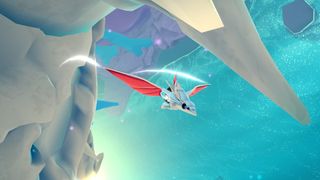
Aspyr was heavily involved with porting InnerSpace to consoles. How did Aspyr contribute to the PC release?
TT: We haven’t only been working on ports since working with Aspyr. We’ve actually doubled the content of the game. Since we started working with Aspyr, we have twice as many worlds and bosses. There was just a level of polish that was not going to be there before.
As we’ve seen in the past, people are attracted to the visuals like honey, but then when they sit down with it, they don’t quite know what they’re getting into.
Eric Grossman
Another thing was optimization. Getting the game working on Switch means things run faster. Where before it would have required a pretty good gaming computer, you can get away with a lot more now. I think it’s going to be a lot more accessible for the PC audience.
Eric Grossman: I also want to mention localisation. We had a streamer play in French last night and it was amazing. That just would not have been possible if we were just going in on our own.
TT: Yeah, how many languages are we on now?
SZ: I think it’s like eight total. It’s so cool seeing it in other languages.
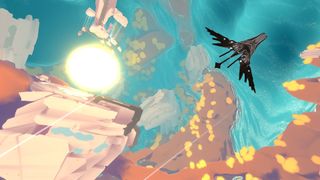
Now you’re seeing it in the hands of streamers and media, what’s been the public response?
EG: It’s really interesting. We’ve started to see people get their hands on it—a lot of influencers too. A lot of the press are still working on what they’re gonna write, so we don’t know what the response will be like there. As we’ve seen in the past, people are attracted to the visuals like honey, but then when they sit down with it, they don’t quite know what they’re getting into. We start to see this warm-up period, where once someone has sat down with it for half an hour, they really start to gel with it.
Now that we’ve actually gotten it to a finished product, we’ve seen a version of that in the wild. It’s really gratifying because we see people who swooned over all the early development stuff and they’re coming to grips with the learning process that Steve described earlier. For me, I kind of forgot that this is going to be a game that people are going to play and it’ll speak to them on an emotional or aesthetic level.
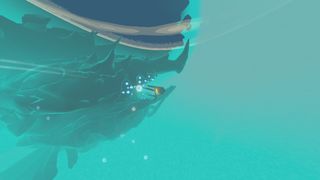
What are your plans looking like after launch?
SZ: I think we’re open to a lot of possibilities. I don’t think we have a decided one just yet. Obviously we’re going to be doing patches and making sure that any bugs brought up in the community are things that we address. We are planning a 30-day patch as a thing for our backers and so people who missed it at launch can be introduced to the game all over again. I can’t touch on what’s going to be in that patch, but we are planning something kind of fun and special for that.
TT: We’ve had some rad ideas for things we could do as a sequel. We’re looking at planes to add as content patches. As far as DLCs or expansions, I think we’re going to wait and see what everyone wants out of the game.
SZ: If we end up doing DLCs or sequels, I very much want to hear what players think. I really want to ingest that and make something those players are going to really like. I think that’s what I’m most excited for personally.
InnerSpace is available on Steam.
Most Popular

